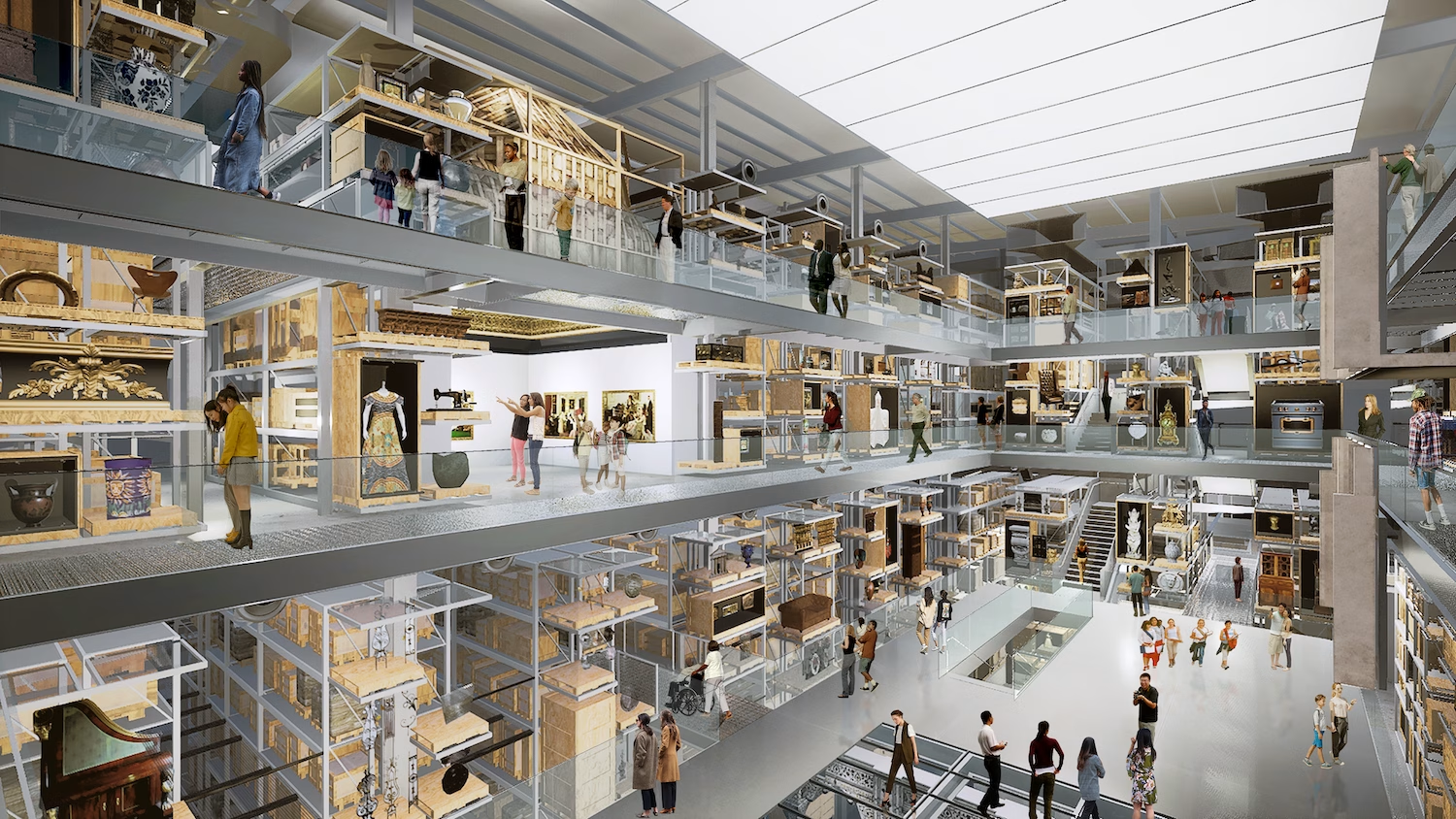Imagine telling your grandchildren about a time when we had social housing as you stroll through the V&A East Storehouse, the newest addition to the Victoria & Albert Museum located in East London. Above you in the expansive atrium, a piece of the now-demolished Robin Hood Gardens, a brutalist council estate from nearby Poplar, hangs as a poignant reminder of times gone by, right next to a stunning 15th-century Islamic dome from a Spanish palace. Both artifacts, the reassembled concrete fragments and the intricately crafted dome, invite reflections on the stories of their former lives.
This magnificent £65 million facility is not only a glimpse into the museum’s vast collection of 250,000 objects; it immerses visitors directly in the action. Unlike other museum stores that offer only a curated peek, the Storehouse allows you to wander through its aisles while conservationists work nearby—unpacking porcelain statues, polishing antique spoons, or carefully handling other invaluable items.
“Here, we want visitors to truly feel connected to the artifacts,” explains Liz Diller from the architecture firm Diller Scofidio + Renfro, which designed the innovative space. “By removing layers of glass, we’ve made it possible for everyone to breathe the same air as the objects.”
It’s an audacious approach. Surrounded by precious treasures, it’s surprising there are no strict limitations like white gloves or lab coats. “There’s a mix of excitement and anxiety,” admits Tim Reeve, the V&A’s deputy director. “But with glass barriers, it wouldn’t feel like you were part of the behind-the-scenes experience.”
Spanning 80 meters on the site of the former Olympic broadcasting center, the Storehouse has arisen out of necessity. The government’s decision to sell Blythe House, the previous storage site for the V&A, British Museum, and Science Museum, prompted a reimagining of public access to national collections, much of which had remained hidden.
The Storehouse isn’t just about showcasing artifacts; it engages visitors in a dialogue with history. It features spaces like a conservation lab, with cameras allowing conservationists to explain their work in real-time, making the experience both educational and interactive. Enhanced by QR codes for deeper engagement, the facility allows the excitement of discovery to unfold at your fingertips.
In the central atrium, which serves as a gathering point, brightly lit displays showcase highlights of the collection, including historic toys and modernist designs. Diller emphasizes the immersive quality of the design, transforming conventional museum pathways into an experience that feels fresh and spontaneous.
However, while the layout opts for a more freeform display strategy rather than traditional categorization, visitors may find themselves disoriented by the unexpected juxtapositions of artifacts. The hope, however, is that this dynamic environment will inspire curiosity and creativity, demystifying how museums operate.
“By exposing all facets of museum work—from curation to conservation—we’re preparing the next generation of museum professionals,” says Brendan Cormier, chief curator of V&A East. The V&A East Storehouse is set to open on May 31 at the Queen Elizabeth Olympic Park, inviting the public to explore the extraordinary world of art and history like never before.













